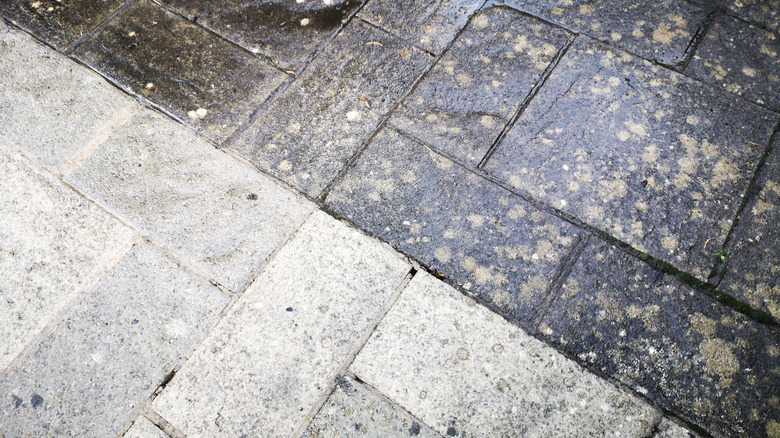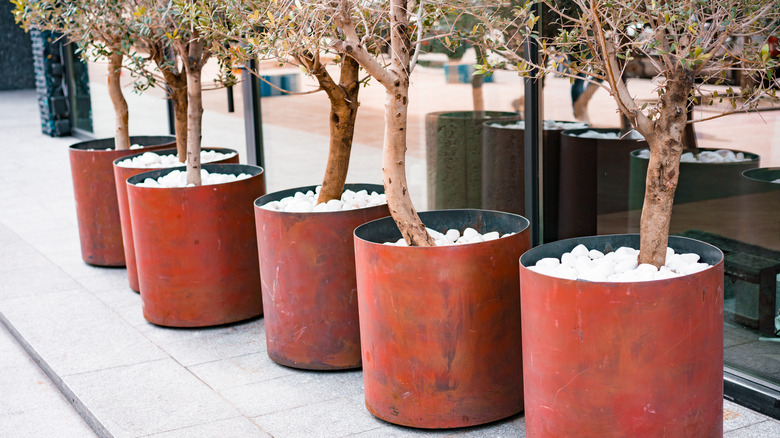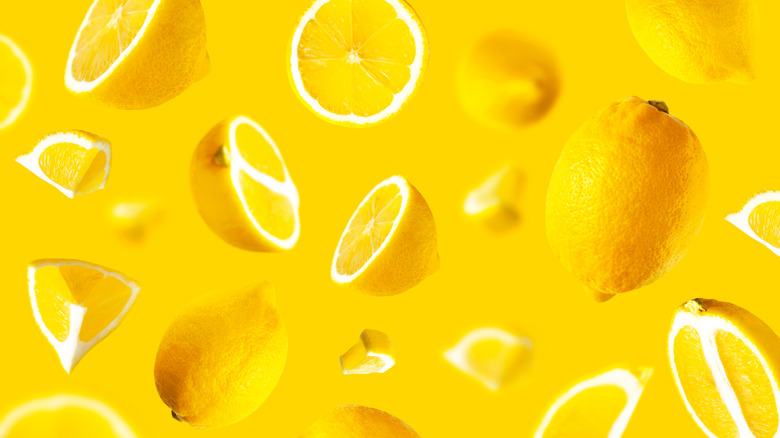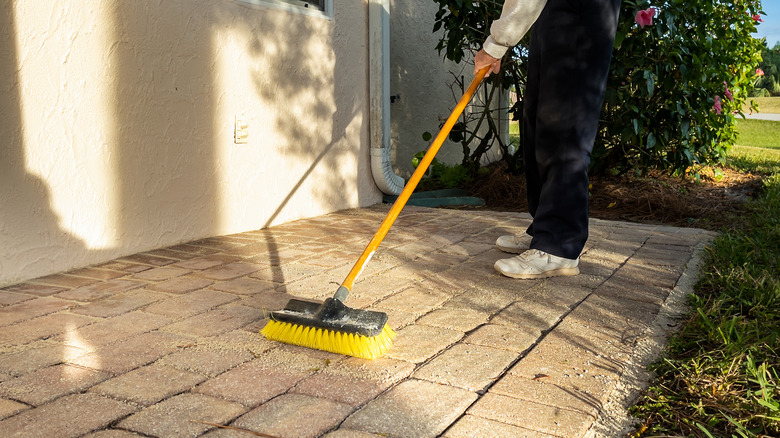How To Clean Your Concrete Patio In 3 Simple Steps
Just as you are eagerly anticipating the season's first pina coladas, firing up the charcoal grill, and preparing for summer's initial dose of rays, you realize your patio is dirty, stained, and weed-infested. Fortunately, short of the hassle and expense of pressure washing it, there are inexpensive and effective DIY ways to clean your outdoor oasis.
Concrete is an economical and practical patio surface. However, it requires preemptive and regular attention to keep it clean and stain-free. According to Gardenia Organic, an annual spring cleaning is advisable to address the build-up of winter dirt and debris. Similarly, at the end of the cooking season, you should also clean the area around your BBQ grill as a matter of course. There are corners and crevices where dirt and moss collect, and these must be monitored regularly, per Simple Green. When it comes to routine maintenance, there are several steps to ensure a clean patio. R & M Concrete suggests attending to your patio on a cloudy but dry day, so the cleaning agent does not evaporate prematurely or get washed away by rain.
Remove debris and expose surface
The first stage of the process is to expose the entire patio surface to prepare it for stain removal and cleaning. The area should be completely cleared of all furniture, planters, barbecue grill, etc. Metal structures might oxidize and leave behind rust stains that need to be exposed and remedied. Put saucers underneath plants when they are returned to the cleaned patio to prevent a recurrence of the discolorations. Any loose dirt or debris needs to be swept away before proceeding with cleaning, and a plastic scraper works well to loosen dried gum or tree sap.
While ridding the patio of obvious detritus, work extra thoroughly in corners where twigs and leaves might accumulate, per Backyard Scape. Don't overlook cracks that may contain weeds, a lot of dirt or sand, and other debris. Manicuring the adjacent grass is a good idea before cleaning the patio. if necessary, use towels, a tarp, or other covering to protect the surrounding areas when working. Keep children and pets away during the cleaning process. Keep in mind that once prepped, an oversized patio might have to be cleaned in sections, and a large amount of your chosen cleanser may be required to finish the job.
Remove patio stains
Concrete is porous, so it is essential to deal with anything that might leave a stain before it penetrates and becomes more difficult to clean. Oily surface stains can be soaked up using sawdust, cornstarch, or kitty litter, per Wolf Paving. A mild patio cleaner and degreaser can be formulated using 2 gallons of warm water and 2 teaspoons of liquid dish soap. Mop it on, then scrub, let sit, rinse, and repeat if needed. White vinegar is also effective against rust, charcoal, or pet stains. Dilute it 50-50 with water or apply the vinegar to difficult stains undiluted.
Mad Backyard suggests using bottled lemon juice or juice from squeezed lemons. Effective on rust and other stains, it works in as little as 10 minutes. Soda is another unlikely stain remover, and its ingredients — carbonated water, citric acid, and phosphoric acid — can degrease a patio in less than a half hour. Be sure to use sugar-free soda and rinse thoroughly when finished to prevent a sticky surface. Naturally abrasive baking soda is another efficient stain remover when mixed with water or vinegar. A small amount of dish detergent can also be added to increase cleaning power. Make sure the baking soda dissolves and spray the concoction on a single stain or apply it to the entire surface. Let sit, scrub, and hose off thoroughly.
Clean patio floor
After readying your patio, familiarize yourself with the wide range of cleaning methods at your disposal. Depending on the type and degree of dirt, You could opt for one of the many organic cleaners, or a harsher, less eco-friendly one. Start conservatively, using the least toxic and abrasive cleaning agent. Be sure to test any type of cleaner on a small, inconspicuous area first. If it passes the test, start working on the most soiled areas.
You may have to escalate to a stronger cleanser if the mild ones are ineffective. Hydrogen peroxide, straight or mixed with flour to form a paste, is a good start. Bleach is a more powerful cleaner that will kill mold and mildew and control weeds, algae, and moss between or on patio tiles. But, My Backyard Life considers it to be problematic. Letting it sit could damage the concrete, so spraying it on is a better approach. Bleach is also toxic to children and pets, and will harm the neighboring grass and plants.
Caustic cleaners are effective but should only be used if the other methods are not strong enough. Muriatic acid is capable of dissolving the binder contained in concrete, while trisodium phosphate does not damage concrete, but it is not recommended due to its detrimental effects on the environment. Always wear protective gear when handling dangerous and irritating chemicals. No matter the approach, Concrete Network suggests adding a regular patio cleaning regimen to your complete maintenance routine.



